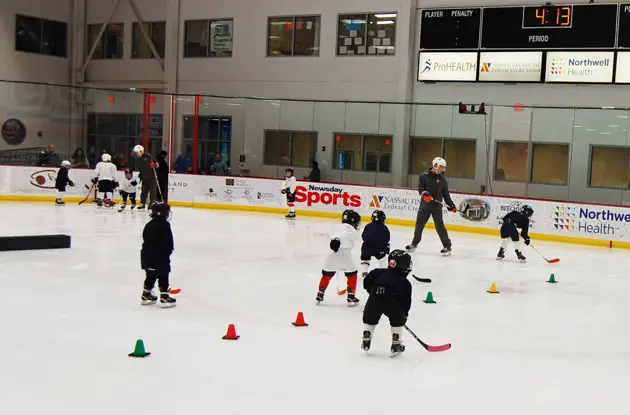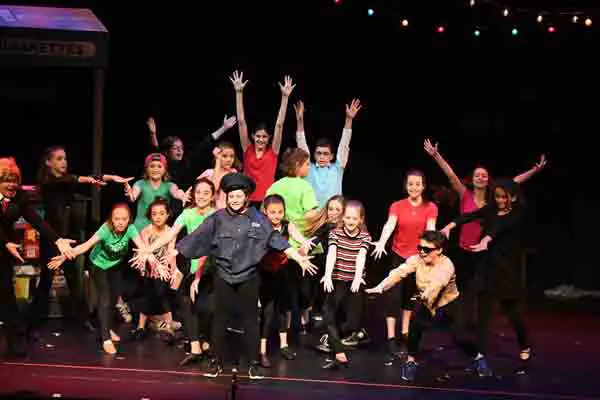Individual sports are becoming more popular among young children, especially tennis. Read on for the many ways individual sports can help foster important life skills such as independence and building focus as well as how they're especially beneficial for children with special needs.
When the U.S. Open returns to the Billie Jean King National Tennis Center in Flushing at the end of August, top-ranked tennis stars from around the world will hit the courts to vie for the championship title. But if you had stopped by that same center on a Tuesday or Thursday morning this summer, you might've been met by the giggles of a dozen or 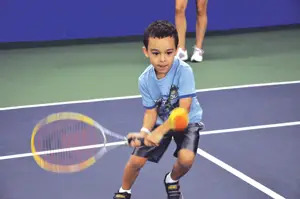 so 4-and 5-year-olds chasing red felt balls across a miniature tennis court, brandishing racquets seemingly shrunk down for their still-growing hands.
so 4-and 5-year-olds chasing red felt balls across a miniature tennis court, brandishing racquets seemingly shrunk down for their still-growing hands.
The National Tennis Center is one of more than 13,000 facilities in the U.S. that has adopted the QuickStart tennis format, a special training program for players ages 10 and under instituted by the United States Tennis Association (USTA) in 2008. The program, which incorporates lower compression balls, smaller courts and racquets, and a modified scoring system, is meant to make it easier — not to mention more fun — for kids to learn tennis.
While team sports like baseball and football have T-ball and peewee programs, many individual sports like tennis have historically been much more difficult for beginners. “When I learned tennis in the late '60s, I was using my father's racquet and being hit at with regular balls. I was lucky I stuck with it,” says Whitney Kraft, director of tennis at the National Tennis Center, who has been teaching the sport for about 30 years. His colleague Tina Taps, programs manager at the center, has similar memories of struggling to learn the game. But for Taps's 9-year-old son Zachary, it's a different story. “I put him out on the court when he was 4 years old,” Taps recalls. And though Zach is not very athletic, she says, the QuickStart program has made tennis fun and given him the confidence to keep playing.
It seems to be working for other children as well: According to the USTA, tennis participation in the U.S. topped 30 million in 2009, for the first time in more than two decades. To propel its Kids Initiative even further, the USTA announced that it will release specific guidelines for the QuickStart program, effective in 2012, and it will encourage the entire industry to bring more kids into tennis by adapting the sport to their needs.
Benefits of Individual Sports
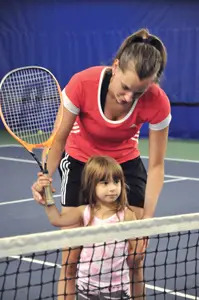 Encouraging participation from a young age is important, advocates like Kraft and Taps say, because individual sports such as tennis (and golf, track, swimming, etc.) have many unique benefits for kids that aren't as prominent in team sports. Apart from encouraging the development of fine and gross motor skills, agility, endurance, and hand-eye coordination, as almost all sports do, individual sports combine physical fitness with mental development, Kraft says. In a sport like tennis, a player is responsible for every move he makes. His success is his own, but so is his disappointment — a combination that can quickly build confidence and self-esteem along with coping skills and resilience. And because players are often alone on the court, without teammates and sometimes even without a coach, they are forced to develop independent thinking. “Kids learn how to problem-solve on their own,” Kraft says. “They have to think on their feet, be able to change strategies and tactics, and resolve their own conflicts.”
Encouraging participation from a young age is important, advocates like Kraft and Taps say, because individual sports such as tennis (and golf, track, swimming, etc.) have many unique benefits for kids that aren't as prominent in team sports. Apart from encouraging the development of fine and gross motor skills, agility, endurance, and hand-eye coordination, as almost all sports do, individual sports combine physical fitness with mental development, Kraft says. In a sport like tennis, a player is responsible for every move he makes. His success is his own, but so is his disappointment — a combination that can quickly build confidence and self-esteem along with coping skills and resilience. And because players are often alone on the court, without teammates and sometimes even without a coach, they are forced to develop independent thinking. “Kids learn how to problem-solve on their own,” Kraft says. “They have to think on their feet, be able to change strategies and tactics, and resolve their own conflicts.”
In a similar vein, these sports can help develop a child's character, says Esther Forrester, founder of Elf Tennis, a portable tennis school that offers lessons to kids in the NYC area. “When you play other sports, you can rely on your teammates, and it can give you the illusion that you can tune out. In tennis, it's just you out there, figuring it out on your own. It builds a lot of independence.” She adds that individual sports also teach kids how to set goals and challenge themselves to achieve their personal best. And because players often receive a more in-depth evaluation from their coach, it allows them to practice taking criticism and using it to improve their game, a habit that will undoubtedly benefit them later in life.
Learning to work as part of a team is also an important life skill, which is why individual sports on the junior level often incorporate team elements. While kids compete individually, they're often part of a larger team setting, contributing points through their performance toward an over all team score. That collaborative aspect, says Taps, is a major contributor to her son's love of the game. “He enjoys the sport of tennis, but he really loves the environment, the camaraderie of kids his own age,” she says.
Solo Sports and Children with Special Needs
Individual sports like tennis can be particularly beneficial for kids with attention deficit, sensory, and socialization disorders because they help develop self-esteem, focus, and social skills while encouraging physical activity. AutismUnited.org lists bowling, swimming, track, and hiking as the top sports for autistic kids, as they often struggle with social cues (like when to pass the ball) and these individual sports take away that element of the game. They're constantly engaged in the game, which requires a great deal of focus, says Kraft, but the key is that the level of stimuli in these sports isn't overwhelming like it can be in a team setting.
According to a 2008 report in the journal Pediatrics, a child with autism and/or communication impairments might struggle with verbal instructions from coaches during certain team sports and benefit more from participation in individual sporting activities. One-on-one coaching can help the child develop her skills more effectively, making her a better player and building her confidence in the game.
The Bigger Picture — Instilling in kids a passion for sport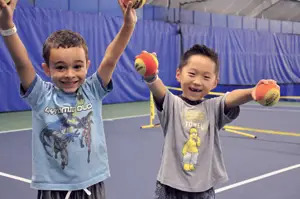
Most kids won't end up being one of those top-ranked players competing in the U.S. Open. But the goal of sports participation, says Joe Siegel, executive multi-sport director at SPORTIME, which operates 13 sports clubs in New York, should be to instill kids with passion for a sport, because that passion will most likely encourage a lifetime of physical activity. Individual sports such as tennis, running, and swimming are good picks as kids get older because they're easily accessible, requiring limited equipment, and the need for other players can be eliminated by playing for exercise rather than competition.
In the end, says Taps, whether it's a team or individual sport, all it has to be is fun. “The way you fall in love with a sport is by having fun playing it,” she says. “When you're a kid and you find a pure love for a sport, you'll continue to do it for the rest of your life. That love lasts a lifetime.”


















